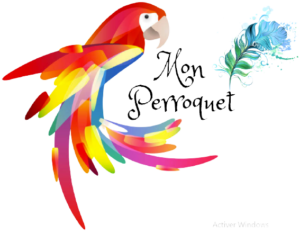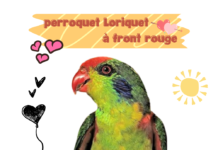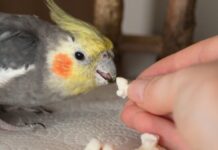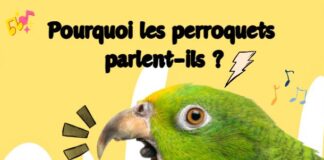Même lorsqu’elles vivent seules, les perruches communiquent en émettant divers sons excitables. Les trilles, les sifflements, les gazouillis et les chansons sans rythme ni rythme reconnaissable sont courants.
Les perruches sont des imitateurs habiles qui aiment reproduire les sons qu’elles entendent dans leur environnement. Si vous adoptez une perruche américaine comme animal de compagnie et discutez avec elle, les perruches vous répondent-elles ?
Les perruches peuvent généralement apprendre à prononcer des mots en anglais, en espagnol, en français ou dans toute autre langue dans de bonnes circonstances. Cependant, la parole humaine n’est pas le principal moyen de communication d’une perruche.
Plus vous parlez à une perruche, plus elle a tendance à imiter ce que vous dites. L’oiseau répétera des bruits qu’il entend fréquemment et qu’il trouve agréable à imiter, qui peuvent inclure des mots humains.
Si vous voulez qu’une perruche parle, vous devez lui consacrer du temps, idéalement lorsqu’elle a moins de 4 mois. Une seule perruche, en particulier un mâle, est plus susceptible de communiquer par la parole.
Les couples de perruches liés se concentreront davantage sur la communication entre eux que sur les souhaits d’un propriétaire humain, se rabattant sur des vocalisations sauvages pour bavarder entre eux.
Est-ce que toutes les perruches parlent ?
Les perruches perruches (Melopsittacus undulatus) peuvent parler, mais tous les oiseaux ne font pas appel à cette compétence. Pour une perruche, parler un langage humain n’est pas une décision consciente. L’oiseau répète simplement un son qu’il entend fréquemment.
Les perruches seules sont plus susceptibles de parler en langage humain que les perruches en couple ou en groupe.
Si vous ne gardez qu’une seule perruche, vous deviendrez le principal centre d’attention de l’oiseau. Il vous observera et vous écoutera constamment, imitant vos manières et vos inflexions vocales.
Si vous élevez plusieurs perruches, le discours encourageant sera plus difficile. Les oiseaux s’intéresseront davantage les uns aux autres qu’à leurs propriétaires humains, répondant ainsi à leurs besoins d’attention et de compagnie.
Vous pouvez toujours entraîner plusieurs perruches à parler, mais les leçons doivent être dispensées en tête-à-tête. Si un autre oiseau se trouve à proximité, ce sera une distraction considérable.
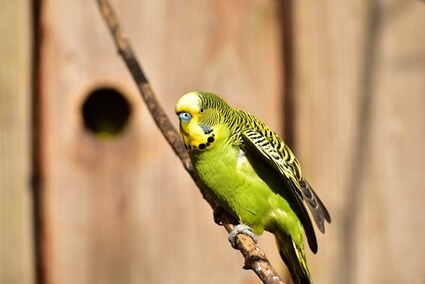
Les perruches femelles peuvent-elles parler ?
Les perruches femelles peuvent parler, mais sont moins susceptibles de le faire que les mâles. Il s’agit d’un vestige de leurs comportements sauvages, où la répétition est moins cruciale pour la survie.
Comme l’explique Ethologie , une perruche mâle sauvage qui souhaite s’accoupler écoutera attentivement les cris et les chants d’une femelle. Le mâle fera écho à ces sons avec une clarté parfaite dans le cadre d’un rituel de parade nuptiale.
The closer the male comes to mirroring the sounds of a female, the likelier she is to accept his invitation to breed. Consequently, male budgies pay more attention to environmental sounds.
This is why a single (male) budgie is likelier to speak. In the absence of an opposite-sex bird to breed with, captive parakeets view human owners through this prism.
The bird is trying to impress you in the same way it would a female budgie.
Sole female budgies in captivity may respond to speech training and learn to repeat a handful of simple words and phrases. A successful outcome is slightly less likely, as females have different motivations.
Can English Budgies Talk?
A slightly larger species of budgie, known as the English budgie, is also popular in the pet trade, although it’s more commonly kept by specialists and displayed at bird shows.
Aside from physical differences – English budgies are larger and stockier, have a more defined plumage, and have rounder heads than American parakeets – they have slightly different temperaments. English budgies are usually much quieter and more relaxed.
English budgies are primarily bred for shows, making them less likely to chirp and chatter throughout the day. However, they’re also more responsive to training from owners, as this is in their nature.
Training an English budgie to talk involves making it clear that you want the bird to communicate. An English budgie is less likely to show off and seek attention from an owner.
English budgies have a low baritone voice and can develop a more extensive vocal repertoire.
An English budgie named Puck held the Guinness World Record for the largest known vocabulary of any bird, learning 1,728 words before he died in 1994.
Do Budgies Understand What They Say?
A budgie can understand the context and reaction that speaking garners from human owners, encouraging the budgie to continue speaking.
Imagine you train a budgie to say, “I’m a pretty bird.” You may have engaged in days or weeks of coaching to no avail, but then the budgie repeats this phrase when you walk into a room.
You’ll likely be thrilled that your efforts have paid off and the bird is now talking, so you’ll shower the budgie with affection and treats. The budgie connects this sequence of sounds with rewards, becoming compelled to repeat them, hoping for the same outcome.
You can coach a budgie into associating particular words with daily events.
For example, the bird may say “good morning” whenever you uncover a cage upon waking. Don’t be surprised if the budgie also says “good morning” in the afternoon and evening.
At What Age Do Budgies Start to Talk?
Budgies often begin chirping and communicating upon hatching from an egg. Most budgies become receptive to human language at 2 to 3 months if adopted from fledgling status.
While it may take up to a year for a budgie to become entirely verbal and coherent in human language, many birds will at least attempt to mimic their owners once they’re able.
If possible, start speech training before the budgie is 4 months old. At this age, the bird’s brain will be more flexible and capable of absorbing significant new information.
Can You Teach an Old Budgie to Talk?
Budgies can learn new words and calls throughout their lives.
Captive budgerigars are less likely to welcome speech training in their senior years. If a budgie isn’t speaking after a year, it may never do so.
Younger budgies are more excitable and respond better to attention from owners. Older budgies are more set in their ways, seeing little need to cater to human desires.
If you’ve lived with a budgie for a long time and it never spoke when young, this is unlikely to change as the bird ages. Some parakeets never master human language, especially if they have a companion.
How Do You Get Budgies to Talk?
Teaching a budgerigar to speak requires patience, consistency, and effort. If you’re dedicated to conversing with a parakeet, follow these steps:
- Bond with the budgie. A parakeet is likelier to respond to training if it has reason to please you.
- If you keep more than one budgie, separate the birds and train them individually.
- Wait for the budgie to calm down before starting the lesson, removing distractions.
- Encourage the budgie to land on your hand or an elevated perch. The idea is to get the bird’s level with your face so the parrot can see your lips while you speak.
- Smile to set the budgie at rest, and enthusiastically use the word you aim to teach. The more gleeful you sound while saying this word, the likelier the budgie is to pay attention.
- If the budgie attempts to repeat the word, even if the result is garbled and incomprehensible, praise and reward them with a treat.
You’ll know if the budgie is engaged in the lesson if its pupils dilate and it watches intently. If you have captured the bird’s attention, you can repeat steps 5 and 6 for up to 20 minutes daily.
Once you’ve completed some lessons and the budgie is interested, you can pair words with hand gestures to aid teaching. This can be especially effective with commands related to behavior.
If a parrot grows bored with a speech lesson, don’t force it to continue for 20 minutes against its will.

How Long Does it Take to Teach a Budgie to Talk?
Each budgie is an individual, so no single timeframe can be ascribed to teaching a parakeet to talk. Some birds quickly pick up on the training, while others will be slower learners.
Consistency is critical, so don’t lose heart and become erratic with speech lessons if you feel the budgie isn’t advancing as fast as you would like. Keep working with the bird for 20 minutes per day.
While there’s never a guarantee that a budgerigar will become a skilled conversationalist, a parakeet will inevitably cease attempting to speak if you abandon training.
Easy Words for Budgies to Learn
Some words are easier for budgies to pronounce than others.
Les perruches n’ont pas de lèvres, elles ont donc souvent du mal à entendre les sons durs b, g, m, t et th. Une perruche peut toujours tenter de faire ces bruits, mais la prononciation peut ne pas être parfaite.
Respectez les limites de la capacité de parole d’une perruche lorsque vous lui apprenez à parler. Commencez par des phrases simples, idéalement ne dépassant pas deux syllabes. Un simple « bonjour » ou « bonne nuit » devrait être de simples leçons sur lesquelles s’appuyer.
Certains des mots et expressions les plus populaires pour enseigner aux perruches ondulées comprennent :
- « Je t’aime. »
- « Joue avec moi. »
- « Euh oh. »
- « Soulève-moi. »
- « Embrasse-moi. »
- « Lever et briller. »
- « S’il te plaît et merci. »
- « Bye Bye. »
- « Couvre-feu. »
- « Bel oiseau. »
Un perroquet ne doit pas être adopté uniquement parce que cette espèce parle bien. Il n’y a aucune garantie qu’un perroquet parlera un jour. Cependant, les perruches peuvent être encouragées à parler si elles sont entraînées et motivées.
[annonce_2]
